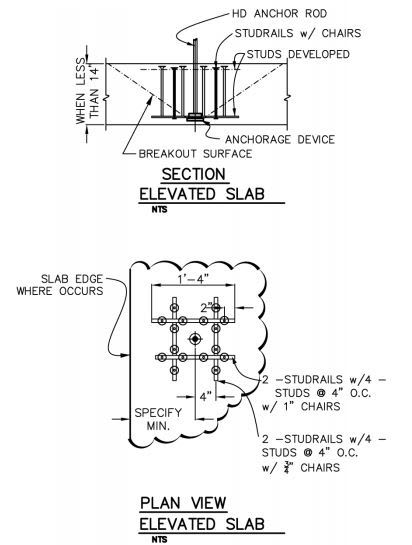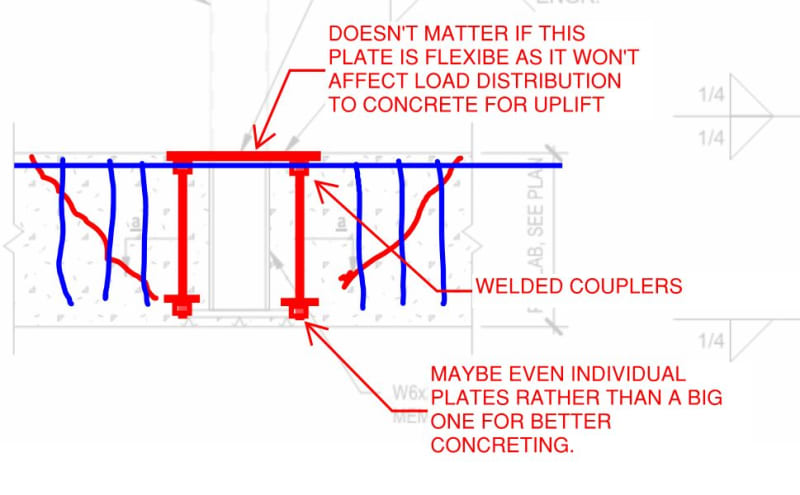VA-Struct-Engr
Structural
Hello everyone.
I have an HSS 6x6 steel post sitting on a 20" thick PT slab. The HSS is part of a braced frame above and has a net uplift of 180kips (1.0W). Seismic loads are not being considered (SDC A). Attached is what I am thinking for the embed. I am checking for the following:
1. weld of post to top plate.
2. weld of top plate to W6 embed.
3. W6 tension capacity (will not govern).
4. weld of W6 to bottom plate (should be same as step 2 above).
5. Punching of bottom plate.
Steps 1 thru 4 are straightforward. For step 5, is checking punching shear of bottom plate a valid approach if I make sure the bottom plate is stiff enough, i.e. make sure cantilever portion of bottom plate does not fail in bending. If I were to take this approach, am I going against ACI 318-14 section 17.4.2.8 or is there something else in the code that allows me to take this approach? Does this section of the code even apply as I am not using an anchor rod but a relatively large wide flange shape?
Your comments would be appreciated.
I have an HSS 6x6 steel post sitting on a 20" thick PT slab. The HSS is part of a braced frame above and has a net uplift of 180kips (1.0W). Seismic loads are not being considered (SDC A). Attached is what I am thinking for the embed. I am checking for the following:
1. weld of post to top plate.
2. weld of top plate to W6 embed.
3. W6 tension capacity (will not govern).
4. weld of W6 to bottom plate (should be same as step 2 above).
5. Punching of bottom plate.
Steps 1 thru 4 are straightforward. For step 5, is checking punching shear of bottom plate a valid approach if I make sure the bottom plate is stiff enough, i.e. make sure cantilever portion of bottom plate does not fail in bending. If I were to take this approach, am I going against ACI 318-14 section 17.4.2.8 or is there something else in the code that allows me to take this approach? Does this section of the code even apply as I am not using an anchor rod but a relatively large wide flange shape?
Your comments would be appreciated.


